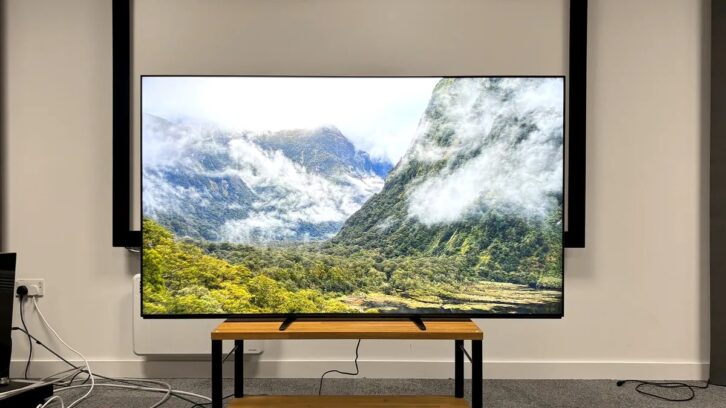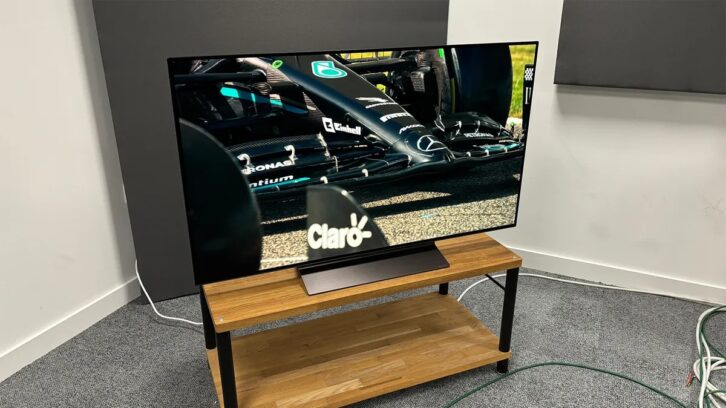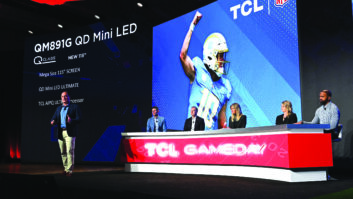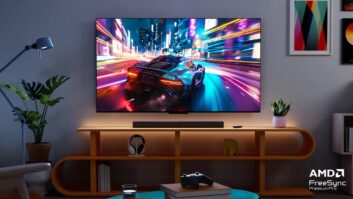
Editor’s note: This article originally appeared on What Hi-Fi?. Visit whathifi.com for more expert TV reviews and more.
2024 was pitched by numerous big-name TV makers as the year Mini LED would dethrone OLED as the top performer in the premium market.
This initially started with Hisense and TCL, two companies with a strong pedigree in the mid-range and affordable TV market that has long espoused Mini LED as the future.
But, the reason we took it particularly seriously this year is that two other companies, both with a very strong track record in the premium TV space, then joined the chorus.
First Samsung came out swinging making some bold performance claims about its QN95D and Q90D sets, which are all but identical to the firm’s S95D and S90D OLED sets, outside of the use of a Mini LED panel. Then Sony followed suit, surprising everyone, the What Hi-Fi? team included when it revealed its 2024 flagship, the Bravia 9 uses a Mini LED panel.
Sure Samsung’s done this before, mainly when it didn’t make OLED TVs and was instead focused on selling Neo QLED (its version of Mini LED) and its Quantum Dot technology as the best TV tech. But it was interesting to see it make the claim again after quietly seeming to concede that OLED is worth it when it launched the S95B in 2022.
Sony was a bigger shock as the firm had great success with OLED in 2023. The Sony A80L is so good we gave it a product of the year award, with our comparative checks showing it to be the best option for most people from a performance and value perspective.
The more expensive Sony A95L also proved to be one of the best TVs we’ve ever seen from a raw performance perspective, which is why we not only gave it a perfect five-star rating, but also continue to use it as a benchmark during our review process.
This brings me to the crux of the question, has the gambit pivoting to push Mini LED in the premium space paid off? With us now halfway through the year and having reviewed many of the big-name sets, including the Hisense U8N, Sony Bravia 9 and Samsung QNS95D, the answer, for now, is a firm “no”.

If you look at the Hisense, Sony, and Samsung reviews you’ll see a common theme – they all earned good, not great, four-star ratings.
There are nuances between each set’s performance, but the common reason shared among all of them is, that though they can go incredibly bright, Mini LED simply can’t match OLED’s perfect blacks. This is because OLEDs generate images by charging individual pixels, while Mini LED charges zones.
In isolation the issue isn’t too bad, as every one of the flagship Mini LED sets we’ve tested delivers a solid picture, with a black level that’s a cut above what you can get on a basic LCD. But in our viewing room, when we ran them against competing OLEDs, including the Award-winning Sony A80L, LG C4, LG G4, and Philips OLED809, in every instance their blacks looked distinctly grey by comparison.
Side-by-side this meant our testers agreed the OLEDs, next to their equivalent priced Mini LED rivals, all delivered a more immersive, three-dimensional image, especially during darker, or high contrast scenes.
We said as much in our Hisense U8N review:
“All-in-all if you are coming from a basic LCD, then the U8N will feel like a night and day upgrade. But if you’re used to OLED, you’ll notice the less deep blacks and paler, cooler color temperature right away.”
And, from our Sony Bravia 9 review: “So, has Sony’s big Bravia 9 gamble paid off? Perhaps not yet.”
And our Samsung QN95D review:
“The S95D, which lurks uncomfortably close on price and with its glorious QD-OLED panel produces a deeper, richer, and more cinematic picture overall. While it may not go quite as bright, the S95D’s sensational handling of contrast means that it will be the better buy for most people.”
So does that mean Mini LED is generally not worth it, or as good? No. Mini LED still has a very definite place in the TV market. Mini LED is easier to produce than OLED, which is why you’ll find it on mid-range and cheap sets. Done right, these can beat OLED in a key metric; value for money.
The Award-winning TCL C845K we tested last year is a great example. Though it can’t beat OLEDs on pure picture quality, it offers the best performance you’ll find at its price – the high cost of OLEDs means there’s no direct rival for it.
This is why I think companies should be focusing on growing and improving Mini LED there, using it to fix the ongoing lack of “good” cheap TVs, which I’ve chronicled many times before, rather than pushing it as a replacement for OLED.
About the Author
Alastair is What Hi-Fi?’s editor-in-chief. He has well over a decade of experience as a journalist working in both B2C and B2B press. During this time he’s covered everything from the launch of the first Amazon Echo to government cyber security policy. Prior to joining What Hi-Fi? he served as Trusted Reviews’ editor-in-chief. Outside of tech, he has a Masters from King’s College London in Ethics and the Philosophy of Religion, is an enthusiastic, but untalented, guitar player and runs a webcomic in his spare time.
See also: Panasonic Re-Enters U.S. TV Market













